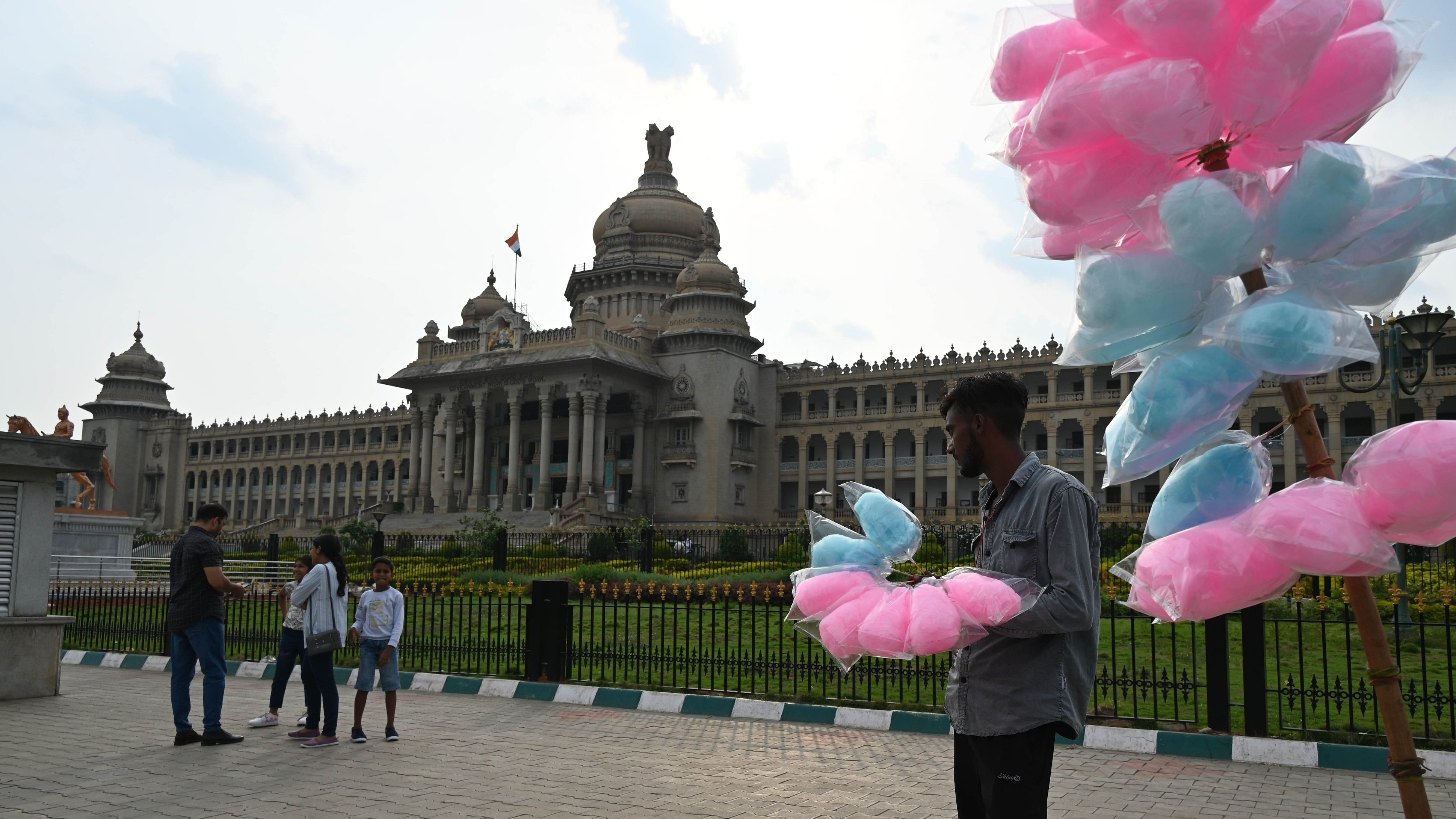
Bengaluru: Earlier this month, Tamil Nadu and Puducherry banned the sale of the ubiquitous pink cotton candy, citing the presence of a carcinogen.
The chemical in question is Rhodamine B. An analysis of samples in Chennai found the presence of the cancer-causing chemical, the health minister of Tamil Nadu confirmed.
“Rhodamine B is actually a dye used in fabric, plastic and carpet industries. It is a synthetic, water-soluble chemical dye. It appears green in powder form but turns bright pink when dissolved in water,” explains Deepika Vasudevan, dietician and Olympic sport nutritionist.
Studies across the globe have suggested Rhodamine B consumed in high doses can be carcinogenic. Even occasional consumption of cotton candy containing Rhodamine B could have negative health effects on children as they are more vulnerable and their immune systems are still developing, experts told Metrolife.
Dr Vinayak S, internal medicine specialist, says, “Apart from being carcinogenic, the dye has various harms. Long-term consumption can cause damage to the liver, eyes, and even the nervous system. Animal experiments have shown that the chemical is harmful to the cerebellum.”
Common adulterant
According to the Food Safety and Standard Authority of India (FSSAI), a list of synthetic colours are marked as safe for consumption.
“The additives regulation list puts down what colours are allowed and what aren’t. Also there are limits prescribed for each colour. If the colours are used within the limit, they shouldn’t be harmful. This is in accordance with the latest research across the world,” says Ramesh Agarwal, CEO, Food Safety Works, a Bengaluru-based food safety consultancy.
He labels Rhodamine B as a common adulterant, classified as a carcinogen and shunned by the European Union. “In India, the dye is also commonly used to enhance the colour of ragi and sweet potatoes,” he says.
Similarly, Rhodamine B is used to add colour to beetroot, ketchup, chilli powder and paste, besides sweets and candies.
“No particular test has been conducted by the Karnataka government yet on cotton candy,” Agarwal says. “So we can’t be sure.”
The government and citizens keep an eye on packaged food and restaurants, but street vendors escape scrutiny, he suggests. In Mapusa, Goa, the local authorities banned street vendors from making gobi manchurian, over the usage of synthetic colours.
Agarwal sheds light on the common use of synthetic food colours in city restaurants, “It is not just one particular dye. At most restaurants, you come across added colours. The bright green in the palak paneer is obviously not real. But then some could be using permissible green dyes,” he says.
Food colours are common adulterants, says Dr Priyanka Singh, clinical dietician and wellness consultant.
“Tartrazine, also known as yellow 5, has been associated with behavioural changes, including irritability, restlessness, depression and difficulty with sleeping. Malachite green, an organic chloride salt, is often used to enhance the colour of green chilli and ladyfinger. Erythrosine injections are used in watermelons to enhance the colour and sweetness,” she says. Tartrazine in commonly used in confectionery items.
Where to complain
In case of food adulteration, you can lodge a complaint with the Food Safety and Standards Authority of India (FSSAI). They have a service called Food Safety Connect.
If a vendor or restaurant is found guilty, they are penalised or sent to jail for up to six months.
Be wary
Commonly used harmful food colours in India:
*Rhodamine B (red)
*Malachite Green
*Auramine (yellow)
*Metanil Yellow
*Orange II
How to detect artificial colour in your food
*For packaged foods, read the labels carefully. While the terms ‘red’ and ‘yellow’ might not be mentioned, look for the scientific names such as ‘Erythrosine’ and ‘Tartrazine’.
*Avoid eating shockingly bright coloured foods that look unnatural.
*Don’t hesitate to ask the server if the restaurant uses food colouring.
Visit: foscos.fssai.gov.in/ consumergrievance